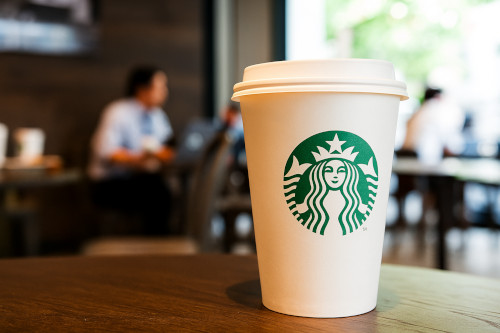Starbucks is yet another story of imagination and courage from our beloved Pacific Northwest. Over the past 40 years, it has grown into a global cultural phenomenon. Originally a coffee bean wholesaler, Starbucks was reimagined in 1987 when Howard Schultz acquired the company. Schultz envisioned the brand as we know it today—and boldly expanded it across the globe, opening an average of three new stores per day for four decades.
For many, Starbucks is a necessity, a habit, or even a small daily luxury. Its widespread appeal stems from omnipresence and consistent quality—in other words, excellent execution. No matter where you are in the world, you can count on the same familiar taste, reliable Wi-Fi, comfortable seating, and clean bathrooms. The signature hustle and bustle creates an ideal environment for both deep solo thinking and collaborative teamwork. Students tackle homework there, researchers lose themselves in thought, and countless business meetings unfold under the green siren’s gaze. Billions in startup funding, millions of hiring pitches, and sales contracts worth billions have been born at Starbucks locations.

Another testament to Starbucks’ success is its app. It’s one of the most popular food and payment platforms, with billions of dollars in gift cards loaded onto it. It tracks loyalty points, streamlines ordering, and has been so successful that some say it detracts from the traditional in-person experience.
Schultz’s imagination and courage transformed a $100 million company into a $100 billion coffee giant. That vision has matured. But what comes next?
It’s hard for me to reimagine anything while sitting outside without looking like a fool. So, allow me to play the fool—perhaps it’ll spark some ideas.
Let’s begin with the loyalty program. As it stands, it lacks what behavioral economists call the endowment effect. You earn points by buying coffee, then spend them on more coffee. It’s a bit unimaginative—and economically inefficient. It’s essentially a wholesale discount scheme: “Buy 10, get the 11th free.” That’s not a rewards program; it’s volume pricing. Many small businesses miscalculate the cost of the “free” cup, assuming it’s merely a marginal cost—when in fact, they lose out on potential full-priced revenue. A customer who buys ten cups would likely pay for the eleventh.
Starbucks markets this as “free coffee.” But it’s not truly free—you’re exchanging accumulated points, which dilutes the psychological joy of receiving something for nothing. It doesn’t activate the psychology of free in the consumer’s mind.
So here’s my first suggestion for a new wave of imagination: reimagine the loyalty program. For frequent customers, offer free upgrades on every order. Use Starbucks’s data to identify treats a customer would enjoy but wouldn’t typically purchase. The upgrade should come as a pleasant surprise after the order is placed—your Tall becomes a Grande, you get an extra flavor shot, or a free coffee cake appears. The reward should feel unexpected and personal. I liken this to airline seat upgrades—they feel genuinely free, unlike mileage redemptions, which I mentally convert into dollars. I’d even explore subscription plans, offering perks like unlimited drip coffee as a base benefit.
Next, let’s consider the app. It should enhance—not just facilitate—the Starbucks experience. Right now, it’s a transactional tool. But it’s something customers engage with daily. Why not evolve it into something bigger—an experience that extends the brand’s culture and community beyond coffee? I would also explore ways to generate revenue beyond customers. Customers prefer companies to earn a part of their revenue from third parties—like Netflix’s ad-supported tier.
Another major asset Starbucks holds is its prime-location stores. But these must be reimagined too—not just with improved décor or seating, but with a redefined purpose. What should a Starbucks location represent in the current era? Without intentional reinvention, this asset could risk becoming a liability. Drive-through competitors are emerging, saving on operating costs and passing those savings on to customers.
Finally: pricing. Starbucks recently announced a new pricing structure for add-ons. But it shouldn’t stop there. Pricing should reflect consumer preferences. How about a lower price for drive-through orders than for in-store seating? One experiment: charge a 15% premium for seating, call it gratuity, and pass it directly to the crew. Or offer ceramic cups exclusively for seated customers. People will understand that their seating or ceramic cups are maintained by the crew—so the 15% gratuity is justified.
Starbucks must continue to execute flawlessly, manage costs, and refine the customer experience—but none of that is enough. The company must relentlessly reimagine itself.
So I’ll leave you with this: How would you reimagine Starbucks? I’d love to hear your thoughts.
Disclaimer: The opinions expressed are solely my own and do not reflect those of my current or past employers.
Other posts in the series: Department of Imagination and Courage; Microsoft: A Story of Imagination and Courage; Expedia: A Success Story Despite Missed Opportunities; T-Mobile: How an Underdog Outweighed Elephants and Redfin and Zillow.
Blog post by Kamal Jain
Hitech Advisors